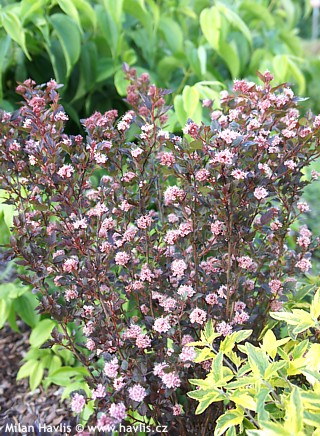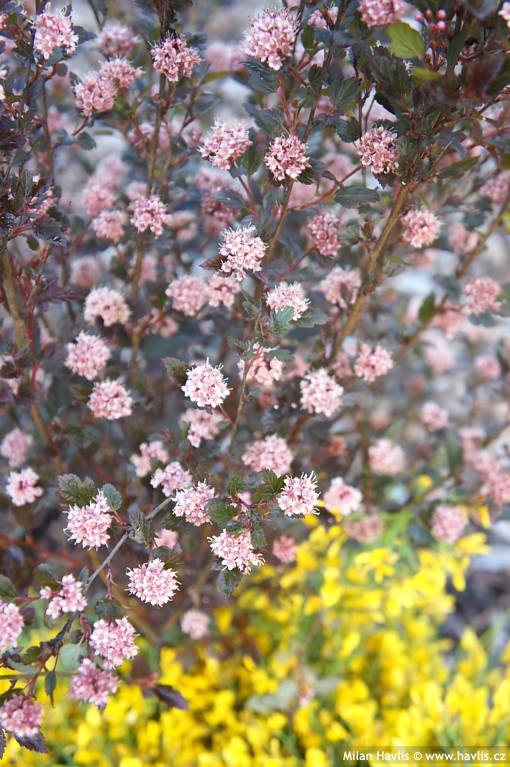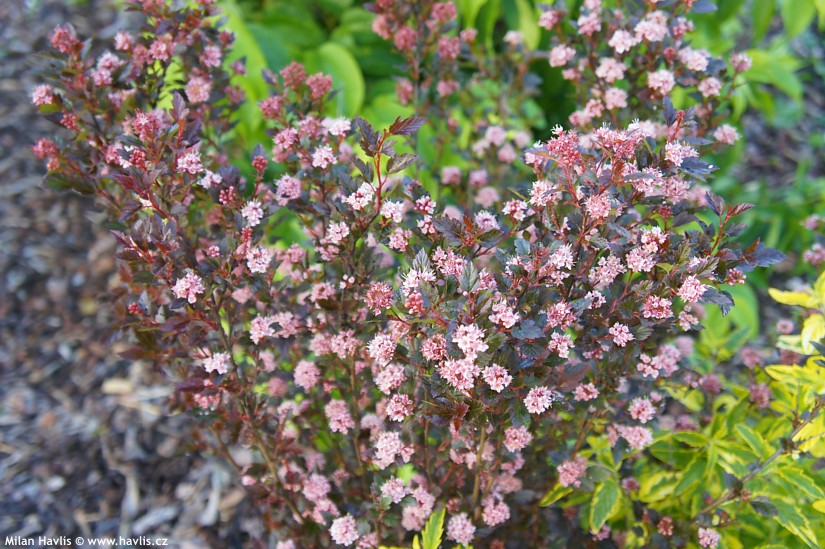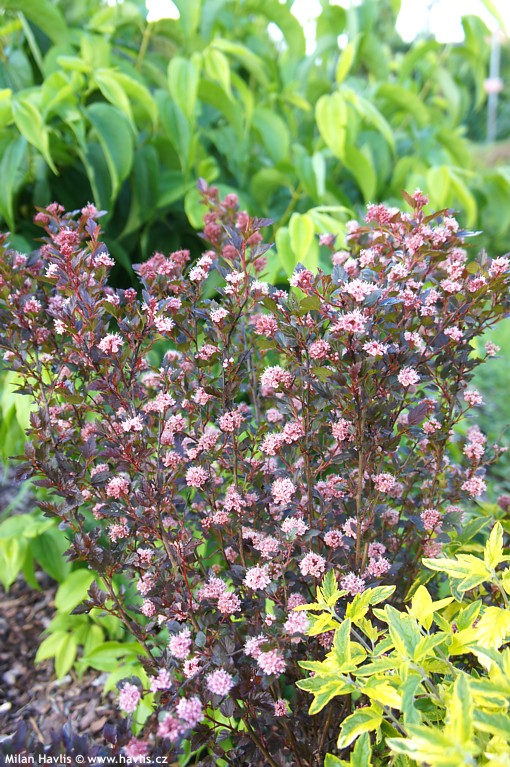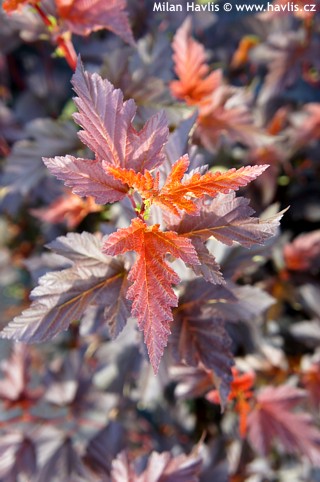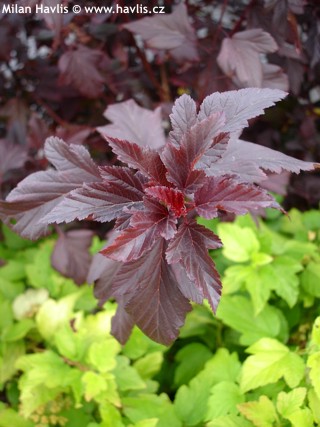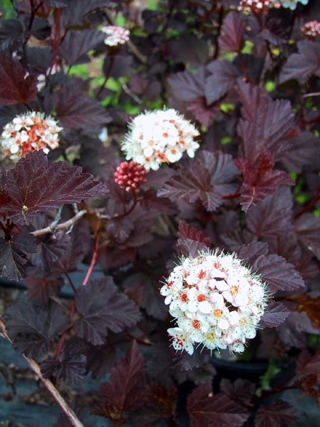Physocarpus opulifolius 'LITTLE DEVIL™' ninebark
Physocarpus
Ninebark is a low-maintenance, deciduous shrub of the Rosaceae family from eastern North America, available in several varieties offering a range of leaf colours and habits. In the new millennium there has been a number of new selections found as natural mutations or crossings which enriched the range of these popular hedging plants.
David Charles Zlesak is an American professor of horticulture at UWRF (University of Wisconsin - River Falls), which is located in USDA zone 4b, which corresponds to a minimum winter temperature of -32 °C. The plants that are bred and cultivated there are therefore much more hardier than what the Central-European continental climate requires. Among other things, Professor Zlesak is dedicated to breeding especially hardy roses and ninebarks, of which he already has quite a few. Six of them were granted a patent protection, including this on, possibly his most famous variety LITTLE DEVIL™ from 2010, which won the Garden Idol of 2011 award from the American Nursery Landscape Association.
Little Devil™ ninebark makes small, deciduous, shallowly lobed to almost serrated maple-like leaves which emerge rich burgundy red and mature very dark green with brown-red hues. Young twigs remain bright garnet red all summer long. In late spring appear numerous small corymbs of light pink, melliferous flowers, soon followed by dark red fruit that lasts for several months. In autumn another attractive feature which gave this plant its name ninebark becomes visible: peeling bark on older stems. It looks especially attractive on a sunny winter day against a layer of fresh snow on the ground.
Ninebarks are so easy to grow. They take any soil, pH and location. The root system is so sturdy it can easily grow through heavy clay that will provide nutrients for a fantastic plant. Little Devil™ will look great grown next to other broadleaved plants with yellow or bright green foliage to provide the best contrast. Location in full sun will make the leaf colour deep. Pruning is not necessary as it branches well but you can cut it in any manner from late winter until early summer. Fully hardy to about -40°C (USDA zone 3) and suitable for outdoor pots.
Last update 16-03-2015; 25-11-2023

































